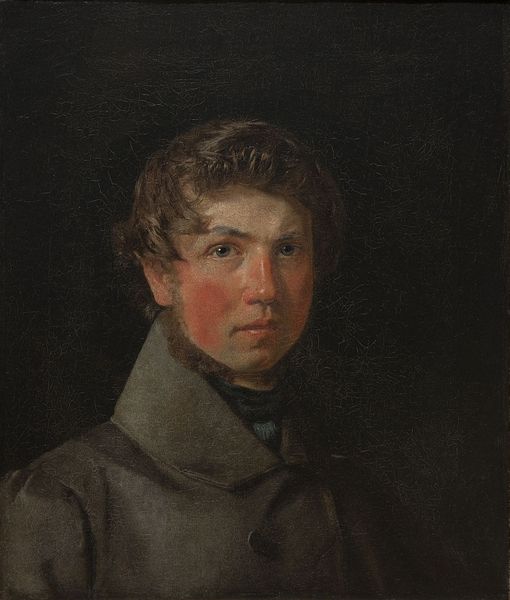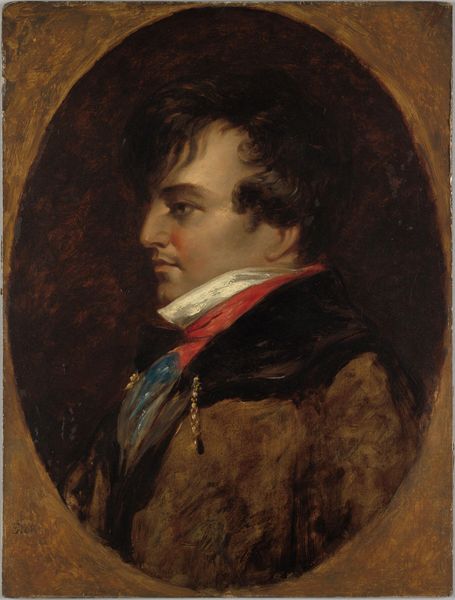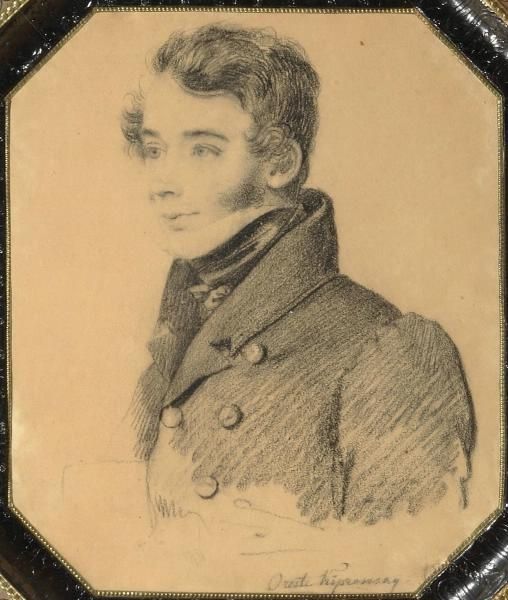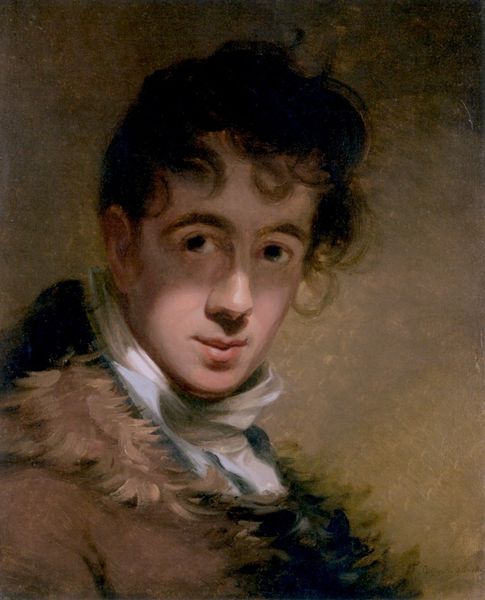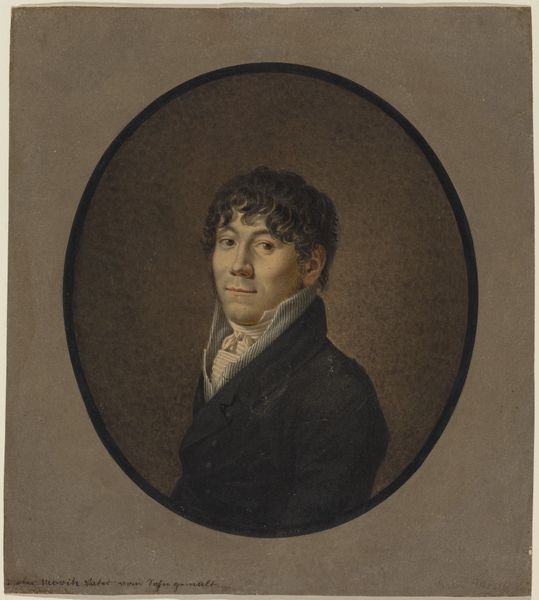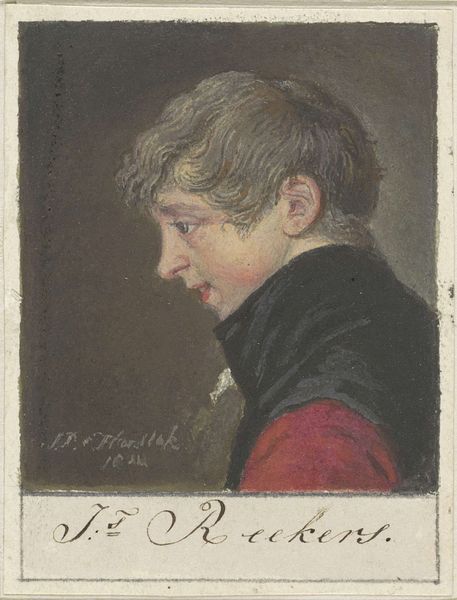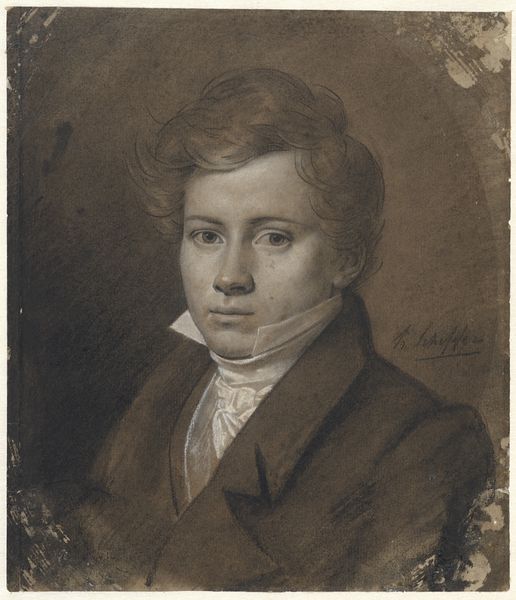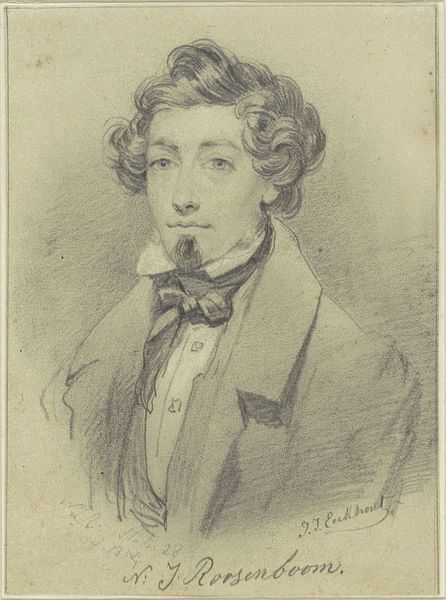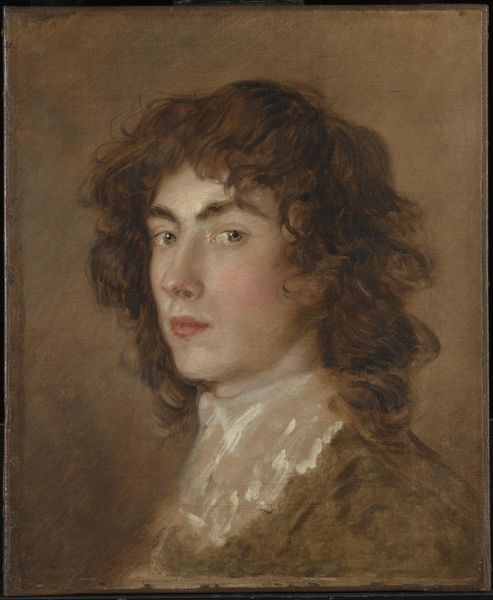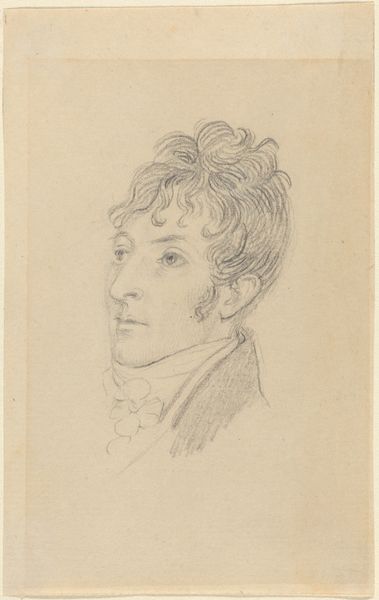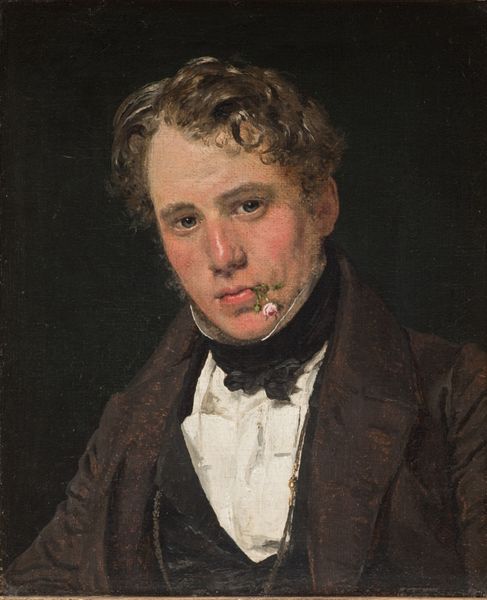
painting, oil-paint
#
portrait
#
painting
#
oil-paint
#
figuration
#
oil painting
#
romanticism
#
academic-art
Dimensions: height 105 mm, width 78 mm, height 120 mm, width 82 mm
Copyright: Rijks Museum: Open Domain
Curator: Here we have William Henry Hunt’s “Portret van de schilder James Holland,” made sometime between 1800 and 1840. Editor: There's a subdued and somewhat serious mood. The scale feels intimate, almost like a miniature. The artist has captured the subtle textures of skin and fabric in a remarkable way, using those early-19th-century oil paints. Curator: Indeed, and it’s essential to note that this painting is not just a simple likeness. Hunt, who made his living primarily through watercolors, shows how labor shaped social identity and class, through his engagement with Holland's own craft as a painter, even if done with oil. It reflects a cultural obsession with depicting creatives that had emerged across Europe at the time. Editor: Yes, the depiction of labor and social standing is quite interesting. Given that it is a portrait of James Holland, the way Hunt paints the collar stiff and restricting, contrasting with the romantic softening of his face, seems like commentary on the performance of identity under industrial capitalism. Curator: Very possibly. It might speak to the way Holland navigated his position in the art world, which itself had become a site of commerce. Oil paint became increasingly available and was mass-produced, so there is the possibility to investigate it also through this lens. The commodification of art-making itself might then be explored via Holland’s portrait. Editor: The work reflects academic styles and clearly references romanticism, yet resists neat categorization. Curator: Perhaps Hunt recognized that labels confine artistic production. To view painting itself as labor demands scrutiny. We are forced to rethink traditional divides between high and low. Editor: This portrait offers fertile ground to think about the relationship between art, identity, and early capitalism. Curator: Agreed; a great challenge for the audience to consider materials, the depicted, and historical contexts. Editor: And hopefully invites critical engagement about representation and social power.
Comments
No comments
Be the first to comment and join the conversation on the ultimate creative platform.
